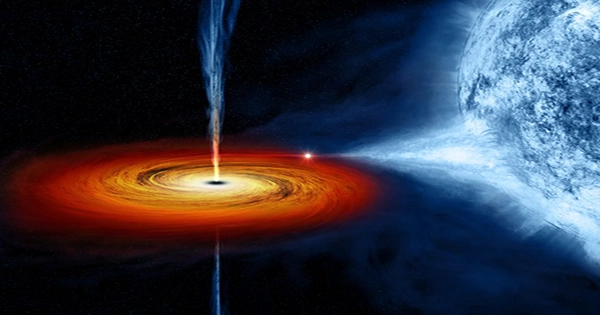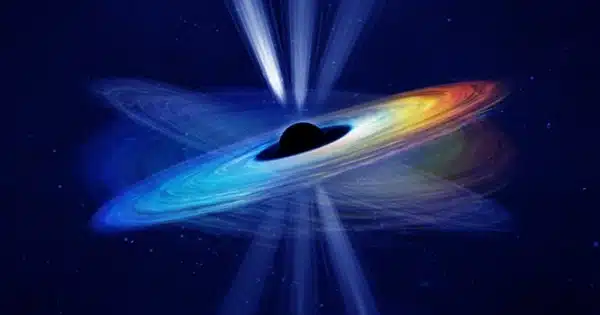The supermassive black hole (SMBH) at the center of galaxy M87 has been discovered to spin, causing its jet to oscillate by approximately 10 degrees. The recently published findings validate one of the most important characteristics of black holes that astronomers have suspected for a long time but have yet to test experimentally.
M87* is the most researched SMBH. It’s not the largest one we’ve discovered, but with 6.5 billion solar masses, it’s significantly larger than our own galaxy and the most massive close enough to investigate comfortably. It’s the monster whose image went viral in 2019 after telescopes all across the world joined to capture an image of its shadow against the accretion disk on which it’s slowly eating.
Prior to those photographs, scientists had frequently focused their telescopes on M87. Data collected by more than 20 radio telescopes across the world between 2000 and 2022 suggest an 11-year cycle in the velocity of the base of the relativistic jet M87. Individual photographs do not provide enough detail to demonstrate this, therefore a team led by Dr Cui Yuzhu of Zhejiang Lab layered 164 images in two-year bins. This also smoothed out differences produced by jet instabilities during shorter time periods.

A black hole like this, and the jet it generates, are so massive that no known external force could cause the jet to swing, thus the movements must be caused by the black hole itself.
If the black hole is spinning, as is considered to be the case, movements of the jet’s base on a regular cycle are to be expected, provided the black hole’s spin axis is misaligned with the rotational axis of its accretion disk. This would result in precession comparable to that which causes the Earth’s axis to slowly shift across the sky, resulting in a 26,000-year cycle in the apparent locations of stars and corresponding changes in temperature.
Along with mass and electric charge, spin is regarded to be a crucial component of a black hole. According to the no-hair theory, these three properties tell us everything we need to know about a black hole. This has lately been contested, but by introducing new variables rather than disputing the significance of spin. A black hole’s gravitational attraction is so strong that when it spins, it causes a moving distortion of spacetime, a phenomenon known as frame-dragging. This would happen even with relatively tiny black holes, but with a massive SMBH like this one, the frame-dragging consequences would be massive.
“We are ecstatic about this significant discovery,” Cui Yuzhu stated in a statement. “Since the misalignment between the black hole and the disk is relatively small and the precession period is around 11 years, accumulating high-resolution data tracing M87’s structure over two decades and thorough analysis are essential to obtain this achievement.”
Other SMBHs have been investigated for similar movements, according to the authors, but none have been discovered. They do, however, point out that if the movements are smaller or the period is longer, they are more difficult to detect, thus there is no reason to question that spin is the norm.














